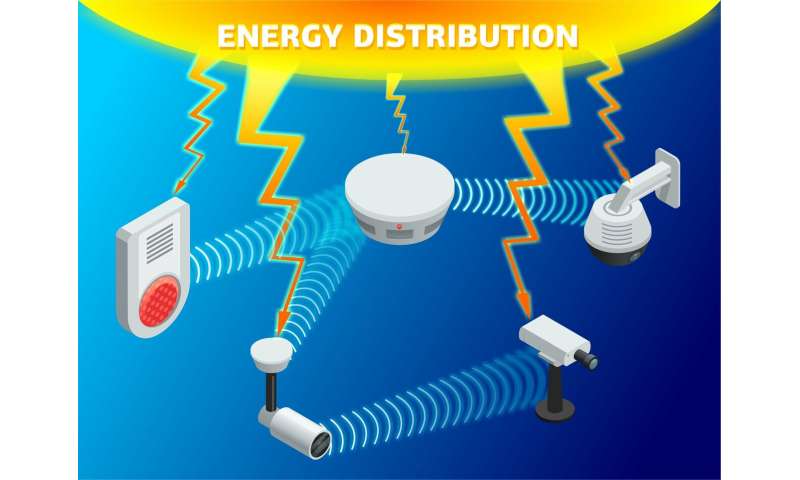RUDN Mathematicians Suggested a Method to Increase Energy Efficiency of Wireless Sensor Networks

RUDN mathematicians developed algorithms to calculate the most efficient distribution of energy among the nodes of a wireless sensor network. The results of the study were published in Performance Evaluation.
Wireless sensor networks are used to monitor different parameters in real time. They are based on a network of sensors and help timely identify malfunctions of operation units that control vibrations, temperature, pressure, etc. Such networks are used for property security, monitoring of ecological values, or management of commercial assets.
To make the sensors work autonomously, they are connected to terminal capacity accumulators. Sometimes it is impossible to arrange current supply via wires due to low accessibility or remoteness of the sensors. However, accumulators tend to discharge and need to be replaced or recharged. RUDN mathematicians together with their colleagues from South Korea studied a model of a sensor that can automatically collect energy from external sources (solar energy, wind energy, electromagnetic waves, or vibrations). Moreover, the authors developed algorithms to calculate the most efficient ways of energy distribution.
"We assumed that a sensor may work in different modes with various speed, data transfer quality, and energy consumption. The higher the speed and the more reliable data transfer, the bigger is energy consumption. Therefore, we had to calculate an optimal processing mode that depends on the current charge level of an accumulator. This was the task we solved," said Sergey Dudin,a junior research associate of the Institute of Applied Mathematics and Telecommunication at RUDN, and a candidate of physics and mathematics.
The researchers used the queueing theory for their calculations. They assessed the efficiency of various strategies taking into account the duration and quality of service depending on available energy volumes. They assumed that the value of energy was higher at low battery charge and lower—when the battery was fully charged, and that current energy consumption mode affected future operation of the system. RUDN mathematicians demonstrated that mode management helps considerably reduce request losses compared to cases when the system worked only in one available mode. Before this study scientists had focused only on simple models with variable service intensity in systems with constantly available energy.
"Our results will help identify an optimal regime for each particular case and find out whether it is expedient to use all possible regimes at once or select some of them. We hope our development would have a considerable economic effect and make wireless sensor networks more available," said Sergey Dudin.
More information:
Chesoong Kim et al. Multi-threshold control by a single-server queuing model with a service rate depending on the amount of harvested energy, Performance Evaluation (2018). DOI: 10.1016/j.peva.2018.09.001
Provided by RUDN University